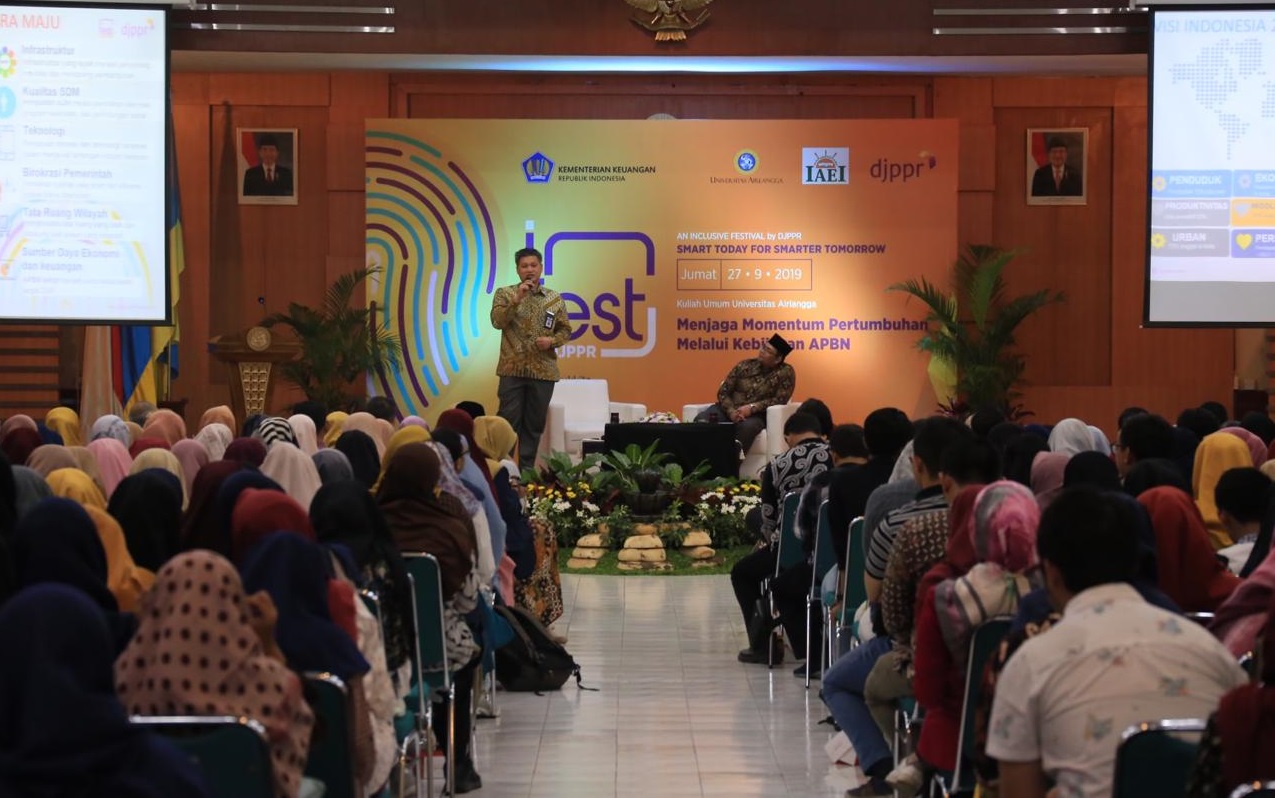UNAIR NEWS – Indonesian Ministry of Finance through the Directorate General of Financing and Risk Management (DJPPR) held a series of events in eleven cities of Indonesia. One of them is Surabaya, in the Faculty of Economics and Business (FEB) Universitas Airlangga (UNAIR). The DJPPR event was titled An Inclusive Festival (INFEST) which was held on Friday, September 27, 2019 at Fadjar Notonagoro FEB UNAIR Hall.
The INFEST program was opened by Junaidi Khotib, S.Si., M. Kes., Ph.D., Apt. as Vice Rector IV UNAIR and Ir. Iyan Rubiyanto, MA as the Secretary of DJPPR. One of the INFEST events was a public lecture on maintaining growth momentum through the state budget policy by Heri Setiawan, S.E., M.S.F as Director of State Financial Risk Management. The program was moderated by Sulistya Rusgianto, S.E., M.I.F, Ph.D. as a lecturer of Islamic Economics.
On that occasion, Heri as the speaker presented Indonesia’s projections in 2045 targeting to become the top five countries in the world with a strong economy and become a developed country.
“This projection is not a projection without reasons. Indonesia has the capital for it. First, the population is estimated at 309 million with a productivity or demographic bonus of 52 percent and an estimated 75 percent of Indonesia’s population is already living in urban areas. And, typical developed countries must control the service sector, which absorbs a large workforce, “said Heri.
To achieve this vision, there are several conditions that must be met, infrastructure and the quality of human resources (HR) improvement through education and research, health, and social protection. Because quality of human resources greatly affects the realization of this vision of advanced Indonesia.
Heri also spoke about the State Budget (ABPN) which serves as an instrument to create growth, prosperity, and equity. Structures in the APBN include income, expenditure and financing.
“If income is smaller than spending, it is called a deficit. If there is a deficit, there is financing which the majority is from debt for the time being. And this State Budget is expected to be a means of public welfare, “said Heri.
Heri also explained that Indonesia’s debt is used for state spending such as infrastructure, education, health, as well as physical Special Allocation Funds (DAK) and Village Funds.
“We are not in great debt, because the principle of the National Budget is sustainable national financing. Central and local government’s debt must not exceed 3 percent. Then the debt ratio is below 60 percent below GDP as the limit, we are far from it, ” Heri explained.
Then, Heri also showed that the origin of Indonesia’s debt was mostly from loans and government securities which were directly financed by the public. The debt is used to finance the state budget as well as from foreign loans which are now in the minority. (*)
Author: Febrian Tito Zakaria Muchtar
Editor: Binti Q. Masruroh





